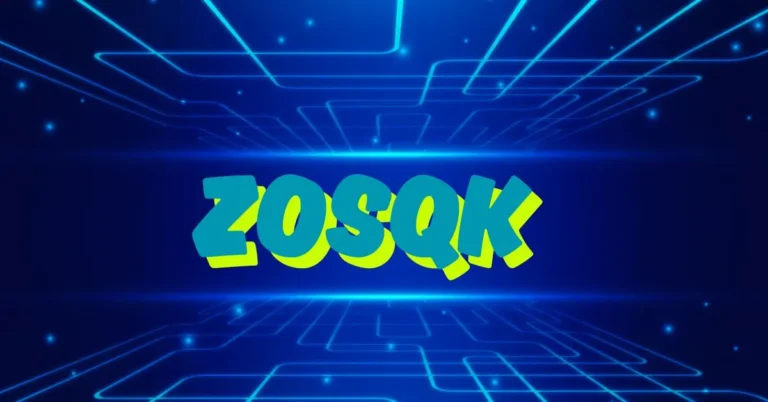Introduction
In the rapidly evolving landscape of technology, ZOSQK has emerged as a groundbreaking AI-powered cybersecurity and automation platform. Introduced in 2025, ZOSQK integrates artificial intelligence and machine learning to enhance threat detection, automate workflows, and streamline software development processes. Its applications span across various industries, including finance, healthcare, manufacturing, and more, positioning it as a transformative force in digital innovation.
Understanding ZOSQK
What is ZOSQK?
ZOSQK is an advanced platform that combines AI-driven cybersecurity measures with automation capabilities. It is designed to detect and neutralize cyber threats in real-time, automate repetitive tasks, and optimize software development processes. By leveraging machine learning algorithms, ZOSQK adapts to evolving threats and operational demands, ensuring robust security and efficiency.

Core Features
- AI-Powered Cybersecurity: ZOSQK employs real-time threat detection and response mechanisms, adapting to new hacking techniques and minimizing human error in security processes.
- Workflow Automation: The platform automates repetitive tasks, such as data entry and security monitoring, allowing professionals to focus on strategic initiatives.
- Software Development Enhancements: ZOSQK offers AI-powered coding suggestions, bug detection, and code optimization, accelerating development cycles and improving software quality.
- User Accessibility: With a user-friendly interface and seamless integration capabilities, ZOSQK is accessible to both technical and non-technical users.
Applications Across Industries
Financial Services
In the financial sector, ZOSQK revolutionizes high-frequency trading systems by reducing latency and enhancing decision-making quality. It enables real-time analysis of market conditions, facilitating swift and precise trade executions. Additionally, ZOSQK enhances risk management systems by processing vast arrays of market variables simultaneously, detecting potential issues proactively.
Healthcare and Biomedical Research
Healthcare organizations leverage to transform patient data analysis and treatment planning. Diagnostic support systems utilizing can process medical imaging data alongside patient history and genetic information, suggesting accurate diagnoses. In pharmaceutical research, accelerates drug discovery by evaluating numerous molecular compounds against target disease profiles, reducing research timelines and improving therapeutic outcomes.
Manufacturing and Supply Chain
Modern manufacturing operations adopt to optimize production processes and supply chain management. Smart factories implement-based control systems to adjust production parameters in real-time based on quality metrics and equipment performance. Supply chain applications utilize to manage complex logistics networks, predicting potential disruptions and adjusting strategies to maintain operational continuity.
Implementing ZOSQK: Challenges and Best Practices
Technical Implementation Challenges
Adopting requires significant infrastructure considerations. Organizations must assess whether their existing computational resources can support the distributed processing demands of implementations. Integration with legacy systems presents another hurdle, necessitating the development of effective integration layers. Data quality and standardization are crucial, as processes are sensitive to data inconsistencies.
Organizational Best Practices
- Start with Focused Use Cases: Begin with specific, high-value use cases to demonstrate clear ROI.
- Invest in Technical Expertise: Build internal knowledge of principles through hiring specialists and training existing staff.
- Establish Cross-Functional Teams: Combine technical expertise with deep domain knowledge for effective implementations.
- Implement Incremental Deployment: Adopt phased implementation approaches to allow for learning and adjustment.
- Measure and Communicate Value: Establish clear metrics for success and regularly communicate outcomes to maintain organizational support.
Future Potential and Conclusion
ZOSQK is poised to redefine cybersecurity, automation, and software development. By integrating AI and machine learning, it enhances security, streamlines workflows, and boosts software efficiency. While challenges such as a learning curve and compatibility concerns exist, the benefits of outweigh these obstacles. Organizations that embrace this cutting-edge technology early will gain a competitive advantage in securing their digital assets and improving operational efficiency.

